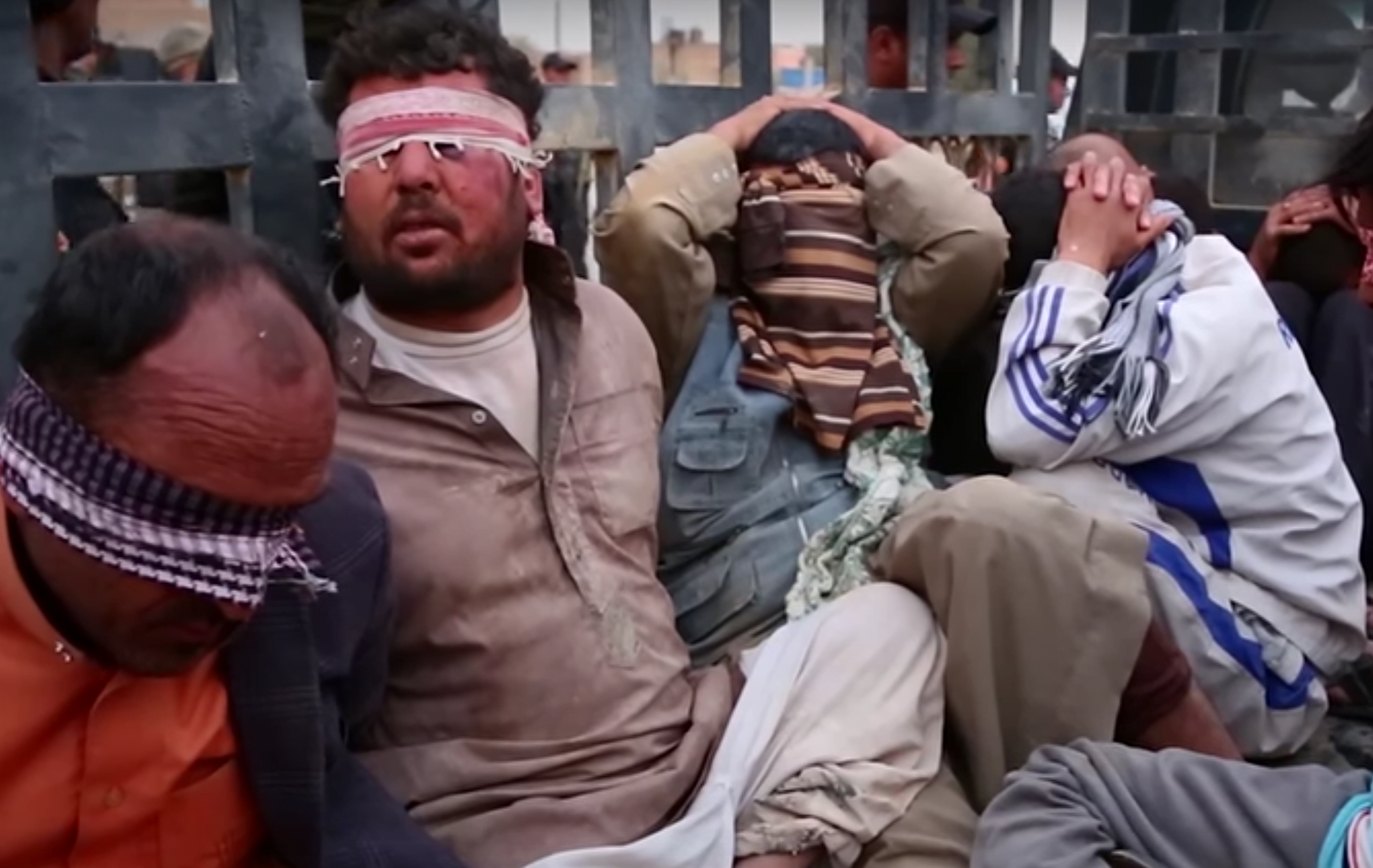Iraqi forces advanced to 3 kilometers from the centre of Islamic State’s second city in Iraq, Fallujah. Officials say that it will be just days before the city is reclaimed from IS by the Iraqi government.
But for some residents of Fallujah, being liberated from IS, may not necessarily mean a return to safety.
Thousands of residents have managed to escape the city – but on 28 May citizens holding white flags were fatally shot by government-allied forces, according to witnesses. This is just the latest in a series of reports of torture, abuse and execution of civilians after areas have been wrested from IS control.
Sectarian Divides
The Iraqi army, made up of groups including Special Forces, police and Popular Mobilization Forces that include Shia militias, have been slowly re-taking territory occupied by IS. Some militias have suffered high losses – a new VICE news documentary graphically details the scope and danger of these efforts in Anbar province. The Iraqi government relies on alliances with these popular militias, often Shia-dominated, to boost army ranks. Preparations to re-take Fallujah began on 23 May. Fallujah, a predominantly Sunni city with nationalist history, is just 50km from Iraqi capital Baghdad.
Fallujah has been under IS control since early 2014. Civilians living in the city suffer the catalogue of abuses globally associated with IS. Dissidents are executed, and women and minorities enslaved. Food supply routes were cut off by government forces in 2015, and residents report eating soups made from grass.
Around 20,000 have escaped from the city in recent days, but their loyalty is now being questioned – Human Rights Watch reports viewing videos in which an Iraqi army commander tells fighters that ‘no civilians or true Muslims’ are left in Fallujah. The UN reports multiple executions of men and boys fleeing IS-controlled areas in and around Fallujah. 600 men were also detained by militias and show signs of rape, burns and knife cuts, according to Human Rights Watch.
Although IS are known to hide fighters among civilians, and some militias are believed to desire revenge for their high losses, the reasons for the militias’ abuses run deeper. When Fallujah fell to IS in 2014, some Iraqis believed that the local Sunni population were not only complicit, but were essentially part of the IS movement rejecting the growth of Shia political power in the country. Fallujah was a symbol of anti-US protest during the Iraq war, and since was a site of anti-government protest in 2013-14. In the context of descent into sectarianism that has blighted Iraq since 2003, Fallujah and its Sunni population appears to be seen by some as fair game in an extremely violent and bitter conflict.
What does this mean for the fight against IS?
Human rights groups have called on the Iraqi army to avoid using Shia militias in the forces fighting in Fallujah and to protect civilians leaving the city. The Iraqi government has announced it will investigate claims of abuse.
But Iraq was affected by sectarian and religious divide long before the rise of IS in 2011 – indeed many argue that this environment of deep-seated alienation and distrust between Shia and Sunni formed the toxic mixture that gave birth to IS.
Around 90,000 people are believed to still be in Fallujah and they have suffered two years under IS rule. Defeating IS militarily is desperately needed for these people, but it will not automatically bring stability. IS has come to represent the worst of all evils in the Middle East, but simply cutting the head off the beast will bring only a shallow peace. Unless the forces that liberate cities from IS control adhere to stick human rights standards, we can expect the kind of resentments that fueled to rise of IS to linger on in Iraq.
